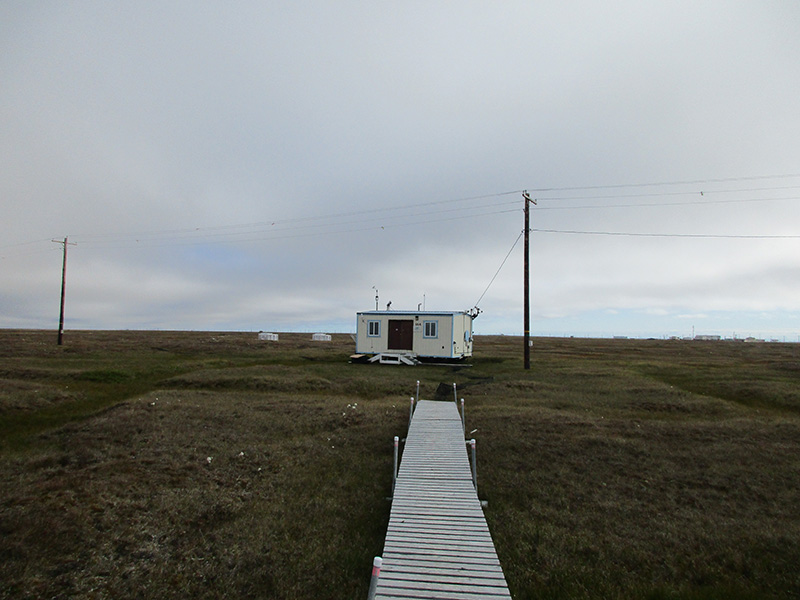Solid Aerosols Found in Arctic Atmosphere Could Affect Cloud Formation and Climate
Published: 21 April 2022
Researchers study particles collected in Alaska during ARM field campaign

The Arctic is rapidly losing sea ice, and less ice means more open water, and more open water means more gas and aerosol emissions from the ocean into the air, warming the atmosphere and making it cloudier.
So when a research team led by University of Michigan aerosol scientist Kerri Pratt collected aerosols from the Arctic’s atmosphere during summer 2015, Rachel Kirpes, then a doctoral student, discovered a curious thing: Aerosolized ammonium sulfate particles didn’t look like typical liquid aerosols.
Working with fellow aerosol scientist Andrew Ault, Kirpes discovered that ammonium sulfate particles, which should have been liquid, were actually solid. The team’s results are published in the Proceedings of the National Academy of Sciences.
Funding for the study came from NOAA, the National Science Foundation, and the U.S. Department of Energy (DOE). The paper acknowledges Pratt’s DOE funding through the Early Career Research Program.
Pratt’s team collected the particles near Utqiaġvik, Alaska, as part of the Summertime Aerosol across the North Slope of Alaska field campaign supported by the Atmospheric Radiation Measurement (ARM) user facility. Researchers from the University of Michigan and Baylor University focused on chemically characterizing sources of summertime aerosol affecting the Utqiaġvik and Oliktok Point ARM sites.
The work included offline particle analysis at the Environmental Molecular Sciences Laboratory (EMSL), which, like ARM, is a DOE Office of Science user facility.
Critical Observations

Solid aerosols can change how clouds form in the Arctic. And, as the Arctic loses ice, researchers expect to see more of these unique particles formed from oceanic emissions combined with ammonia from birds, which will affect cloud formation and climate. In addition, understanding the characteristics of aerosols in the atmosphere is critical for improving the ability of climate models to predict current and future climate in the Arctic and beyond.
“The Arctic is warming faster than anywhere else in the world. As we have more emissions from open water in the atmosphere, these types of particles could become more important,” said Pratt, an associate professor of chemistry and earth and environmental sciences. “These types of observations are so critical because we have so few observations to even evaluate the accuracy of models of the Arctic atmosphere.
“With so few observations, sometimes you get surprises like this when you make measurements. These particles didn’t look like anything we had ever seen in the literature, in the Arctic, or anywhere else in the world.”
For more on the research, read the full news release from the University of Michigan.
Keep up with the Atmospheric Observer
Updates on ARM news, events, and opportunities delivered to your inbox
ARM User Profile
ARM welcomes users from all institutions and nations. A free ARM user account is needed to access ARM data.


















